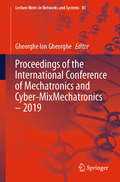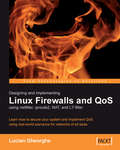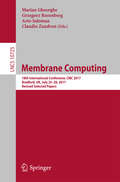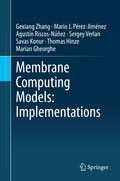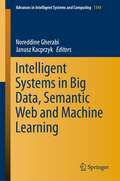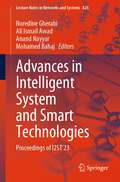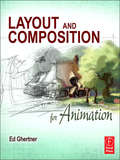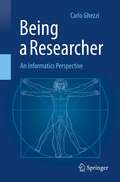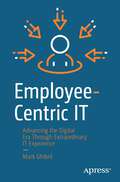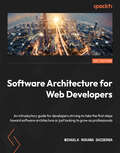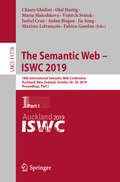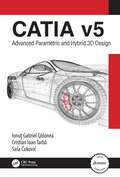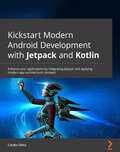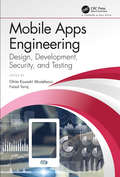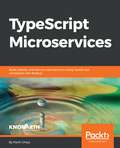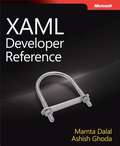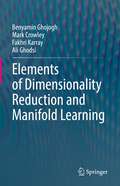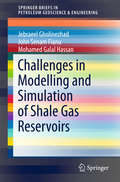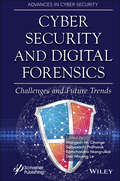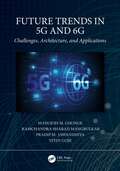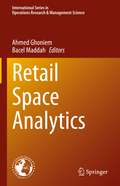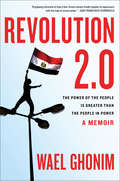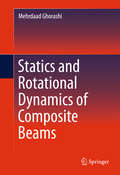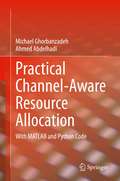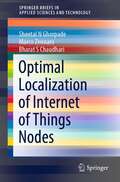- Table View
- List View
Proceedings of the International Conference of Mechatronics and Cyber-MixMechatronics – 2019 (Lecture Notes in Networks and Systems #85)
by Gheorghe Ion GheorgheThese proceedings gather contributions presented at the 3rd International Conference of Mechatronics and Cyber-MixMechatronics/ICOMECYME, organized by the National Institute of R&D in Mechatronics and Measurement Technique in Bucharest, Romania, on September 5th–6th, 2019. Reflecting the expansion mechatronics, it discusses topics in the newer trans-disciplinary fields, such as adaptronics, integronics, and cyber-mixmechatronics. With a rich scientific tradition and attracting specialists from around the globe – including North America, South America, and Asia – ICOMECYME focuses on presenting the latest research. It is mainly directed at academics and advanced students, but also appeals to R&D experts, offering a platform for scientific exchange. These proceedings are a valuable resource for entrepreneurs who want to invest in research and who are open for collaborations.
Designing and Implementing Linux Firewalls and QoS using netfilter, iproute2, NAT and l7-filter
by Lucian GheorgheThe author draws on his experience to offer the reader valuable advice on the best practices. Providing only necessary theoretical background, the book takes a practical approach, presenting case studies and plenty of illustrative examples. This book is aimed at Linux Network administrators with some understanding of Linux security threats and issues, or any one interested in securing their systems behind a firewall. Basic knowledge of Linux is presumed but other than that this book shows you how to do the rest, from configuring your system to dealing with security breaches.
Membrane Computing
by Marian Gheorghe Grzegorz Rozenberg Arto Salomaa Claudio ZandronPart of the broader research field of natural computing, Membrane Computing is an area within computing science that aims to abstract computing ideas and models from the structure and functioning of living cells, as well as from the way the cells are organized in tissues or higher orderstructures. It studies models of computation (known as P systems) inspired by the biochemistry of cells, in particular by the role of membranes in the compartmentalization of living cells into "protected reactors". This handbook provides both a comprehensive survey of available knowledge and established research topics, and a guide to recent developments in the field, covering the subject from theory to applications. The handbook is suitable both for introducing novices to this area of research, and as a mainsource of reference for active researchers. It sets out the necessary biological and formal background, with the introductory chapter serving as a gentle introduction to and overview of membrane computing. Individual chapters, written by leading researchers in membrane computing, present the stateof the art of all main research trends and include extensive bibliographies.
Membrane Computing Models: Implementations
by Marian Gheorghe Gexiang Zhang Sergey Verlan Agustín Riscos-Núñez Thomas Hinze Mario J. Pérez-Jiménez Savas KonurThe theoretical basis of membrane computing was established in the early 2000s with fundamental research into the computational power, complexity aspects and relationships with other (un)conventional computing paradigms. Although this core theoretical research has continued to grow rapidly and vigorously, another area of investigation has since been added, focusing on the applications of this model in many areas, most prominently in systems and synthetic biology, engineering optimization, power system fault diagnosis and mobile robot controller design. The further development of these applications and their broad adoption by other researchers, as well as the expansion of the membrane computing modelling paradigm to other applications, call for a set of robust, efficient, reliable and easy-to-use tools supporting the most significant membrane computing models. This work provides comprehensive descriptions of such tools, making it a valuable resource for anyone interested in membrane computing models.
Intelligent Systems in Big Data, Semantic Web and Machine Learning (Advances in Intelligent Systems and Computing #1344)
by Noreddine Gherabi Janusz KacprzykThis book describes important methodologies, tools and techniques from the fields of artificial intelligence, basically those which are based on relevant conceptual and formal development. The coverage is wide, ranging from machine learning to the use of data on the Semantic Web, with many new topics. The contributions are concerned with machine learning, big data, data processing in medicine, similarity processing in ontologies, semantic image analysis, as well as many applications including the use of machine leaning techniques for cloud security, artificial intelligence techniques for detecting COVID-19, the Internet of things, etc. The book is meant to be a very important and useful source of information for researchers and doctoral students in data analysis, Semantic Web, big data, machine learning, computer engineering and related disciplines, as well as for postgraduate students who want to integrate the doctoral cycle.
Advances in Intelligent System and Smart Technologies: Proceedings of I2ST’23 (Lecture Notes in Networks and Systems #826)
by Noredine Gherabi Ali Ismail Awad Anand Nayyar Mohamed BahajThis book is a collection of high-quality peer-reviewed research papers presented at The International Conference on Intelligent Systems and Smart Technologies (I2ST’23) held at the Faculty of Science and Technology of Hassan First University, Morocco, on January 17–18, 2023. I2ST'23 is a forum for presenting new advances and research results in the fields of information, communication, and smart technologies. The book discusses significant issues relating to machine learning, smart technologies, and data analytics. The main and distinctive topics covered are: I) AI& Intelligent, II) Systems Smart Technologies, III) Communications and Networking, IV) Software Engineering & Web Applications, V) Information Technology, and VI) Software Engineering & Web Applications.
Layout and Composition for Animation
by Ed GhertnerThis essential, hands-on guide is filled with examples of what a composition should look like and example of poorly designed layouts. Spot potential problems before they cost time and money, and adapt creative solutions for your own projects with this invaluable resource for beginner and intermediate artists. With Beauty and the Beast examples and Simpson character layouts, readers will learn how to develop character layout and background layout as well as strengthen composition styles with a creative toolset of trick shot examples and inspirational case studies. A companion website will include further technique based tools, finalized layout and composition examples and tutorials for further artistic skill development.
Being a Researcher: An Informatics Perspective
by Carlo GhezziThis book explores research from the researchers’ perspective: why to engage in research, what methods to follow, how to operate in daily life, what the responsibilities are, how to engage with society, and the ethical issues confronting professionals in their day-to-day research. The book systematically discusses what every student should be told when entering academic or industrial research so that they can avoid going through the painful process of learning by personal experience and lots of errors. Rather than being technical, it is philosophical and sometimes even anecdotal, combining factual information and commonly accepted knowledge on research and its methods, while at the same time clearly distinguishing between objective and factual concepts and data, and subjective considerations. The book is about scientific research in general and as such holds true for any scientific field. However, it is fair to say that the different fields differ in their research cultures and in their eco-systems. The book reflects the author’s experience accumulated over almost 50 years of teaching graduate courses and lecturing in doctoral symposia at Politecnico di Milano, University of Zurich, TU Wien, Peking University, and at various conferences, and of academic research in informatics (also known as computer science). This book is mainly intended for students who are considering research as a possible career option; for in-progress researchers who have entered doctoral programs; and for junior postdoctoral researchers. It will also appeal to senior researchers involved in mentoring students and junior researchers.
Employee-Centric IT: Advancing the Digital Era Through Extraordinary IT Experience
by Mark GhibrilGlobal surveys from McKinsey, BCG, Gartner, and others show that less than 30% of digital transformation programs succeed in their missions to improve a company’s performance and employee productivity. This is due to the fact that IT efforts within the company do not center around the employee. This book will provide concrete steps to allow both IT professionals and business leaders to transform the way they deliver IT to employees – with the employee (the human) centered in their transformation.The concepts, models, checklists, and playbook you'll review are based on the author's many years of experience, lessons learned, and proven outcomes. IT organizations want to improve their employee experience but don’t know how and this is the “must have” book for those who don’t know where to start. More than two-thirds of today’s jobs require good digital and IT skills from employees. The expectations of management, who invest in these big digital transformations, is that the employees will become more productive, effective and help the bottom line. However, this can only happen through active and proactive change of IT operations and transformations that center the employee, rather than technology or senior management. This book reveals the benefit of moving towards an approach where employees gain technology aptitude, are up for technology change, and are willing to learn more for their benefit and even provide feedback on ways to improve these tools, trainings and support. You'll see how employee engagement and experience research, concepts, and implementations are growing rapidly across many organizations and taking a key role in their global strategies. Employee-centric IT will transform employees to own their digital literacy and development, and this in turn reduces or even eliminates the shadow IT need and allows the organization to drive and implement successful digital transformation.What You'll LearnUnderstand the value of being employee-centric in IT departments versus current modelsTake steps to win IT team’s acceptance of the changes needed to achieve employee-centricityBe proactive in providing training & information on digital & productivity toolsWho This Book Is ForBusiness leaders, IT and digital leaders as well as IT employees who would like to transform their current IT and Digital teams to be more employee centric and drive highest level of value, adoption and satisfaction for their IT/digital programs, transformations and investment.
Software Architecture for Web Developers: An introductory guide for developers striving to take the first steps toward software architecture or just looking to grow as professionals
by Mihaela Roxana GhidersaDiscover an accessible pathway to advancing your career and becoming a web architect by building a solid technical ground in software architectureKey FeaturesFollow your desired career path that leads to a lucrative job as a web architectDevelop a solid technical background in software architecture using real-world practices and patternsLearn proven techniques and design considerations from an industry expertBook DescriptionLarge-scale web applications require you to write code efficiently following business and architectural considerations. They require web developers to understand the impact of their work on the system and how they can evolve the product.With this handbook, every developer will find something to take away. This book will help web developers looking to change projects or work on a new project in understanding the context of the application, along with how some design decisions or patterns fit better in their application's architecture. It acts as a guide, taking you through different levels of professional growth with a focus on best practices, coding guidelines, business considerations, and soft skills that will help you gain the knowledge to craft a career in web development. Finally, you'll work with examples and ways of applying the discussed concepts in practical situations.By the end of this book, you'll have gained valuable insights into what it means to be a web architect, as well as the impact architecture has on a web application.What you will learnUnderstand the context of software architecture, from shaping the product to delivery and beyondBecome well versed in what a web architect's role meansExplore go-to key concepts for every time you try your hand at app developmentAnalyze the importance of relationships with stakeholdersGet acquainted with the benefits of well-designed architectureDig into and solve myths web developers have come across or created along the wayWho this book is forThis book is for web developers who want to become web architects. Beginner-level web developers will be able to develop a strong technical background, and experienced web developers will learn techniques to become better professionals by understanding the web architect's role and the impact of efficient architecture on their projects.
The Semantic Web – ISWC 2019: 18th International Semantic Web Conference, Auckland, New Zealand, October 26–30, 2019, Proceedings, Part I (Lecture Notes in Computer Science #11778)
by Chiara Ghidini Olaf Hartig Maria Maleshkova Vojtěch Svátek Isabel Cruz Aidan Hogan Jie Song Maxime Lefrançois Fabien GandonThe two-volume set of LNCS 11778 and 11779 constitutes the refereed proceedings of the 18th International Semantic Web Conference, ISWC 2019, held in Auckland, New Zealand, in October 2019. The ISWC conference is the premier international forum for the Semantic Web / Linked Data Community.The total of 74 full papers included in this volume was selected from 283 submissions. The conference is organized in three tracks: for the Research Track 42 full papers were selected from 194 submissions; the Resource Track contains 21 full papers, selected from 64 submissions; and the In-Use Track features 11 full papers which were selected from 25 submissions to this track.
CATIA v5: Advanced Parametric and Hybrid 3D Design
by Ionuţ Gabriel Ghionea Cristian Ioan Tarbă Saša ĆukovićThis tutorial textbook is an essential companion to using CATIA v5 to assist with computer-aided design. Using clear CAD examples, it demonstrates the various ways through which the potential of this versatile software can be used to aid engineers in 3D modelling. Based on 20 years of teaching experience, the authors present methods of using CATIA v5 to model solid and surface parts, to perform parametric modelling and design of families of parts, reconstruction of surfaces, to create macros and to apply various tools and their options during 3D modelling. Importantly, this book will also help readers to discover multiple modelling solutions and approaches to solve common issues within design engineering. With a comprehensive approach, this book is suitable for both beginners and those with a good grasp of CATIA v5. Featuring an end chapter with questions and solutions for self-assessment, this book also includes 3D modelling practice problems, presented in the form of 2D engineering drawings of many 3D parts in both orthogonal and isometric views. Using the knowledge gained through reading the book chapters, users will learn how to approach surfaces and solids as 3D models using CATIA v5. This book provides detailed explanations, using clear figures, annotations and links to video tutorials. It is an ideal companion for any student or engineer using CATIA v5, in industries including automotive, naval, aerospace and design engineering. Readers of this book should note that the length and distance dimensions are in millimeters and the angular dimensions are in degrees. All other parameters, such as radii, areas and volumes, also use the metric system.
Kickstart Modern Android Development with Jetpack and Kotlin: Enhance your applications by integrating Jetpack and applying modern app architectural concepts
by Catalin GhitaExplore modern Android development in Kotlin 1.6.10 with this condensed hands-on guide to building reliable apps using libraries such as Compose, ViewModel, Hilt, Retrofit, Flow, and moreKey FeaturesExplore Jetpack libraries and other modern technologies for Android developmentImprove the architectural design of your Android appsEnhance the quality of your Android projects' code bases and applications using the latest librariesBook DescriptionWith Jetpack libraries, you can build and design high-quality, robust Android apps that have an improved architecture and work consistently across different versions and devices. This book will help you understand how Jetpack allows developers to follow best practices and architectural patterns when building Android apps while also eliminating boilerplate code. Developers working with Android and Kotlin will be able to put their knowledge to work with this condensed practical guide to building apps with the most popular Jetpack libraries, including Jetpack Compose, ViewModel, Hilt, Room, Paging, Lifecycle, and Navigation. You'll get to grips with relevant libraries and architectural patterns, including popular libraries in the Android ecosystem such as Retrofit, Coroutines, and Flow while building modern applications with real-world data. By the end of this Android app development book, you'll have learned how to leverage Jetpack libraries and your knowledge of architectural concepts for building, designing, and testing robust Android applications for various use cases.What you will learnIntegrate popular Jetpack libraries such as Compose, ViewModel, Hilt, and Navigation into real Android apps with KotlinApply modern app architecture concepts such as MVVM, dependency injection, and clean architectureExplore Android libraries such as Retrofit, Coroutines, and FlowIntegrate Compose with the rest of the Jetpack libraries or other popular Android librariesWork with other Jetpack libraries such as Paging and Room while integrating a real REST API that supports paginationTest Compose UI and the application logic through unit testsWho this book is forThis book is for junior and intermediate-level Android developers looking to level up their Android development skills to develop high-quality apps using Jetpack libraries and other cutting-edge technologies. Beginners with knowledge of Android development fundamentals will also find this book useful. Familiarity with Kotlin is assumed.
Mobile Apps Engineering: Design, Development, Security, and Testing
by Ghita Kouadri Mostefaoui and Faisal TariqThe objective of this edited book is to gather best practices in the development and management of mobile apps projects. Mobile Apps Engineering aims to provide software engineering lecturers, students and researchers of mobile computing a starting point for developing successful mobile apps. To achieve these objectives, the book’s contributors emphasize the essential concepts of the field, such as apps design, testing and security, with the intention of offering a compact, self-contained book which shall stimulate further research interest in the topic. The editors hope and believe that their efforts in bringing this book together can make mobile apps engineering an independent discipline inspired by traditional software engineering, but taking into account the new challenges posed by mobile computing.
TypeScript Microservices: Build, deploy, and secure Microservices using TypeScript combined with Node.js
by Parth GhiyaBuild robust microservice-based applications that are distributed, fault tolerant, and always availableKey FeaturesLearn to build message-driven services for effective communicationDesign microservices API using Reactive programming design patternsDeploy, scale and monitor microservices for consistent high performanceBook DescriptionIn the last few years or so, microservices have achieved the rock star status and right now are one of the most tangible solutions in enterprises to make quick, effective, and scalable applications. The apparent rise of Typescript and long evolution from ES5 to ES6 has seen lots of big companies move to ES6 stack. If you want to learn how to leverage the power of microservices to build robust architecture using reactive programming and Typescript in Node.js, then this book is for you.Typescript Microservices is an end-to-end guide that shows you the implementation of microservices from scratch; right from starting the project to hardening and securing your services. We will begin with a brief introduction to microservices before learning to break your monolith applications into microservices. From here, you will learn reactive programming patterns and how to build APIs for microservices. The next set of topics will take you through the microservice architecture with TypeScript and communication between services. Further, you will learn to test and deploy your TypeScript microservices using the latest tools and implement continuous integration. Finally, you will learn to secure and harden your microservice.By the end of the book, you will be able to build production-ready, scalable, and maintainable microservices using Node.js and Typescript.What you will learnGet acquainted with the fundamentals behind microservices.Explore the behavioral changes needed for moving from monolithic to microservices.Dive into reactive programming, Typescript and Node.js to learn its fundamentals in microservicesUnderstand and design a service gateway and service registry for your microservices.Maintain the state of microservice and handle dependencies.Perfect your microservice with unit testing and Integration testingDevelop a microservice, secure it, deploy it, and then scale itWho this book is forThis book is for JavaScript developers seeking to utilize their Node.js and Typescript skills to build microservices and move away from the monolithic architecture. Prior knowledge of TypeScript and Node.js is assumed.
XAML Developer Reference
by Ashish Ghoda Mamta DalalYour expert guide to designing and building dynamic user interfaces Sharpen your application design and development skills using XAML--the declarative markup language used in Microsoft® Silverlight® and Windows® Presentation Foundation (WPF). Led by two XAML experts, you'll learn practical ways to build rich, interactive user interfaces with data integration capabilities and support for multimedia, graphics, and animation. This hands-on guide is ideal for Microsoft .NET developers and web designers alike. Discover how to: Control UI behavior and implement business logic with code-behind solutions Manage UI element positioning with the XAML layout system Use templates to customize UI elements--without affecting their functionality Apply different types of property and event systems in WPF and Silverlight Bind various kinds of data to your UI, and display them in the format you want Implement 2D and 3D vector graphics and animations Reuse control styles and properties to maintain consistency throughout your application
Elements of Dimensionality Reduction and Manifold Learning
by Benyamin Ghojogh Mark Crowley Fakhri Karray Ali GhodsiDimensionality reduction, also known as manifold learning, is an area of machine learning used for extracting informative features from data for better representation of data or separation between classes. This book presents a cohesive review of linear and nonlinear dimensionality reduction and manifold learning. Three main aspects of dimensionality reduction are covered: spectral dimensionality reduction, probabilistic dimensionality reduction, and neural network-based dimensionality reduction, which have geometric, probabilistic, and information-theoretic points of view to dimensionality reduction, respectively. The necessary background and preliminaries on linear algebra, optimization, and kernels are also explained to ensure a comprehensive understanding of the algorithms.The tools introduced in this book can be applied to various applications involving feature extraction, image processing, computer vision, and signal processing. This book is applicable to a wide audience who would like to acquire a deep understanding of the various ways to extract, transform, and understand the structure of data. The intended audiences are academics, students, and industry professionals. Academic researchers and students can use this book as a textbook for machine learning and dimensionality reduction. Data scientists, machine learning scientists, computer vision scientists, and computer scientists can use this book as a reference. It can also be helpful to statisticians in the field of statistical learning and applied mathematicians in the fields of manifolds and subspace analysis. Industry professionals, including applied engineers, data engineers, and engineers in various fields of science dealing with machine learning, can use this as a guidebook for feature extraction from their data, as the raw data in industry often require preprocessing.The book is grounded in theory but provides thorough explanations and diverse examples to improve the reader’s comprehension of the advanced topics. Advanced methods are explained in a step-by-step manner so that readers of all levels can follow the reasoning and come to a deep understanding of the concepts. This book does not assume advanced theoretical background in machine learning and provides necessary background, although an undergraduate-level background in linear algebra and calculus is recommended.
Challenges in Modelling and Simulation of Shale Gas Reservoirs (Springerbriefs In Petroleum Geoscience And Engineering Ser.)
by Jebraeel Gholinezhad John Senam Fianu Mohamed Galal HassanThis book addresses the problems involved in the modelling and simulation of shale gas reservoirs, and details recent advances in the field. It discusses various modelling and simulation challenges, such as the complexity of fracture networks, adsorption phenomena, non-Darcy flow, and natural fracture networks, presenting the latest findings in these areas. It also discusses the difficulties of developing shale gas models, and compares analytical modelling and numerical simulations of shale gas reservoirs with those of conventional reservoirs. Offering a comprehensive review of the state-of-the-art in developing shale gas models and simulators in the upstream oil industry, it allows readers to gain a better understanding of these reservoirs and encourages more systematic research on efficient exploitation of shale gas plays. It is a valuable resource for researchers interested in the modelling of unconventional reservoirs and graduate students studying reservoir engineering. It is also of interest to practising reservoir and production engineers.
Cyber Security and Digital Forensics (Advances in Cyber Security)
by Mangesh M. Ghonge Sabyasachi Pramanik Ramchandra Mangrulkar Dac-Nhuong LeCYBER SECURITY AND DIGITAL FORENSICS Cyber security is an incredibly important issue that is constantly changing, with new methods, processes, and technologies coming online all the time. Books like this are invaluable to professionals working in this area, to stay abreast of all of these changes. Current cyber threats are getting more complicated and advanced with the rapid evolution of adversarial techniques. Networked computing and portable electronic devices have broadened the role of digital forensics beyond traditional investigations into computer crime. The overall increase in the use of computers as a way of storing and retrieving high-security information requires appropriate security measures to protect the entire computing and communication scenario worldwide. Further, with the introduction of the internet and its underlying technology, facets of information security are becoming a primary concern to protect networks and cyber infrastructures from various threats. This groundbreaking new volume, written and edited by a wide range of professionals in this area, covers broad technical and socio-economic perspectives for the utilization of information and communication technologies and the development of practical solutions in cyber security and digital forensics. Not just for the professional working in the field, but also for the student or academic on the university level, this is a must-have for any library. Audience: Practitioners, consultants, engineers, academics, and other professionals working in the areas of cyber analysis, cyber security, homeland security, national defense, the protection of national critical infrastructures, cyber-crime, cyber vulnerabilities, cyber-attacks related to network systems, cyber threat reduction planning, and those who provide leadership in cyber security management both in public and private sectors
Future Trends in 5G and 6G: Challenges, Architecture, and Applications
by Mangesh Ghonge Ramchandra Sharad Mangrulkar Pradip M Jawandhiya Nitin GojeFuture Trends in 5G and 6G: Challenges, Architecture, and Applications offers a comprehensive overview of basic communication and networking technologies. It focuses on emerging technologies, such as Software-Defined Network (SDN)-based ad hoc networks, 5G, Machine Learning, and Deep Learning solutions for communication and networking, Cloud Computing, etc. It also includes discussions on practical and innovative applications, including Network Security, Smart Cities, e-health, and Intelligent Systems. The book addresses several key issues in SDN energy-efficient systems, the Internet of Things, Big Data, Cloud Computing and Virtualization, Machine Learning, Deep Learning, Cryptography, and 6G wireless technology and its future. It provides students, researchers, and practicing engineers with an expert guide to the fundamental concepts, challenges, architecture, applications, and state-of-the-art developments in communication and networking.
Retail Space Analytics (International Series in Operations Research & Management Science #339)
by Ahmed Ghoniem Bacel MaddahThis edited volume presents state-of-the-art research that can leverage large-scale sensory data collected in grocery/retail stores where a single customer visit may generate nearly 10,000 data points. For decades, retail shelf space optimization has been confined to the analysis of product allocation decisions over a limited number of shelves, often taken in isolation. Such models incorporated interesting concepts relating to space and cross-space elasticity in the design of planograms. Although useful, these models have not addressed the bigger picture of planning store shelf space in a more holistic manner. It is important to note that the space planning analytics in the book are particularly important in an era where e-commerce is on the rise and brick-and-mortar retailing is declining and experiencing severe crises (the retail apocalypse).This is the first research-oriented book that examines novel problems in store space analytics, triggered by modern-day sensory technologies, customer trackers, and transactional tools (point-of-sales, etc.). In fact, such transformative technologies have prompted the development of new and exciting business practices, accompanied by the need for powerful data-driven models and analyses in retail shelf space and layout planning. The book will facilitate developing algorithms and decision tools that allow a better leverage of the data collected from these mediums.
Revolution 2.0: The Power of the People Is Greater Than the People in Power, A Memoir (Playaway Adult Nonfiction Ser.)
by Wael GhonimThe former Google executive and political activist tells the story of the Egyptian revolution he helped ignite through the power of social media. In the summer of 2010, thirty-year-old Google executive Wael Ghonim anonymously launched a Facebook page to protest the death of an Egyptian man at the hands of security forces. The page&’s following expanded quickly and moved from online protests to a nonconfrontational movement. On January 25, 2011, Tahrir Square resounded with calls for change. Yet just as the revolution began in earnest, Ghonim was captured and held for twelve days of brutal interrogation. After he was released, he gave a tearful speech on national television, and the protests grew more intense. Four days later, the president of Egypt was gone. In this riveting story, Ghonim takes us inside the movement and shares the keys to unleashing the power of crowds in the age of social networking. &“A gripping chronicle of how a fear-frozen society finally topples its oppressors with the help of social media.&” —San Francisco Chronicle &“Revolution 2.0 excels in chronicling the roiling tension in the months before the uprising, the careful organization required and the momentum it unleashed.&” —NPR.org
Statics and Rotational Dynamics of Composite Beams
by Mehrdaad GhorashiThis book presents a comprehensive study of the nonlinear statics and dynamics of composite beams and consists of solutions with and without active elements embedded in the beams. The static solution provides the initial conditions for the dynamic analysis. The dynamic problems considered include the analyses of clamped (hingeless) and articulated (hinged) accelerating rotating beams. Two independent numerical solutions for the steady state and the transient responses are presented. The author illustrates that the transient solution of the nonlinear formulation of accelerating rotating beam converges to the steady state solution obtained by the shooting method. Other key areas considered include calculation of the effect of perturbing the steady state solution, coupled nonlinear flap-lag dynamics of a rotating articulated beam with hinge offset and aerodynamic damping, and static and dynamic responses of nonlinear composite beams with embedded anisotropic piezo-composite actuators. The book is intended as a thorough study of nonlinear elasticity of slender beams and is targeted to researchers, graduate students, and practicing engineers in the fields of structural dynamics, aerospace structures, and mechanical engineering.
Practical Channel-Aware Resource Allocation: With MATLAB and Python Code
by Michael Ghorbanzadeh Ahmed AbdelhadiThis book dives into radio resource allocation optimizations, a research area for wireless communications, in a pragmatic way and not only includes wireless channel conditions but also incorporates the channel in a simple and practical fashion via well-understood equations. Most importantly, the book presents a practical perspective by modeling channel conditions using terrain-aware propagation which narrows the gap between purely theoretical work and that of industry methods. The provided propagation modeling reflects industry grade scenarios for radio environment map and hence makes the channel based resource allocation presented in the book a field-grade view. Also, the book provides large scale simulations that account for realistic locations with terrain conditions that can produce realistic scenarios applicable in the field. Most portions of the book are accompanied with MATLAB code and occasionally MATLAB/Python/C code. The book is intended for graduate students, academics, researchers of resource allocation in mathematics, computer science, and electrical engineering departments as well as working professionals/engineers in wireless industry.
Optimal Localization of Internet of Things Nodes (SpringerBriefs in Applied Sciences and Technology)
by Sheetal N Ghorpade Marco Zennaro Bharat S ChaudhariThis book is a practical resource for designing Internet of Things (IoT) networks and implementing IoT applications from the localization perspective. With the emergence of IoT, machine to machine communication, Industrial IoT, and other societal applications, many applications require knowledge of the exact location of mobile IoT nodes in real-time. As the IoT nodes have computational and energy limitations, it is a crucial research challenge to optimize the network's performance with the highest localization accuracy. Many researchers are working towards such localization problems. However, there is no single book available for the detailed study on IoT node localization. This book provides one-stop multidisciplinary solutions for IoT node localization, design requirements, challenges, constraints, available techniques, comparison, related applications, and future directions. Special features included are theory supported by algorithmic development, treatment of optimization techniques, and applications.
